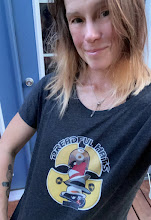I finally had a daylight moment to read yesterday evening. I have caught up on the next Glenda Adams story, “Kangaroo,” in Lies and Stories. That was easy, just four pages. Then I sorted the newspaper pile and found an article from May 24 (at least it is from this year) about memoirs, rather, a review of three film memoirs: “The Way They Were: A Trio of Masterly Memoirs,” by Philip Kennicott.
I have no memory of saving the crumpled up Washington Post Style and Arts section, but clearly I meant to read the article. So I did. A month later.
The most scathing (and true) observation about contemporary written memoirs: “One awful thing follows another, and then a few chapters before the end there is some tripe about healing and redemption.”
What Kennicott describes as different in these three film memoirs from the “well-debased form” or written memoirs inspires me, not to make a film (how the hell would I do that?), but to write. He writes, “Memoir – the most personal and idiosyncratic form of storytelling – is as much about how we remember as it is about what we remember.”
I have some memoir-like thing percolating in notes, in my head, in fantasy. But I have nothing suitably traumatic to relate. I wondered if anyone would be interested in a memoir that was did not detail “the pain and suffering of addiction or incest or bulimia or child abuse.” But those things (awful as they are – real as they are) have become the cliché in written memoirs. So maybe I’m not living in a complete fantasy land.
These films, “L’Aimee” by Arnaud Desplechin, “The Beaches of Agnes” by Agnes Varda, and “My Winnipeg” by Guy Maddin, sound lovely in themselves – and were showing at the National Gallery of Art (in late May). Kennicott describes how the medium of film “plays with the illusion of immortality.” I like that. To distill the article’s descriptions (keep in mind, I have not seen any of these films): “My Winnipeg” is about leaving a hometown city, “L’Aimee” jumps off from cleaning out an attic full of a mother/grandmother/great-grandmother’s artifacts, and “The Beaches of Agnes” has the 80+-year-old “grandmother of new wave” telling her story on the beach with mirrors (or that’s how I read the description). No over-the-top trauma – but so compelling. This could be done in the written form, too.
There could be a place for my little memoir-like thing, which does hinge on the idea of how I remember, what I remember and why (and have forgotten, for that matter).
